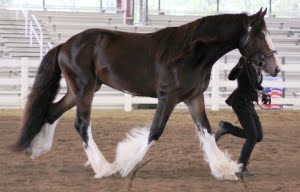Previously published in ‘The Fjord Herald’ Magazine – Winter 2014
(Part Two in a Three-Part Series)
Respectful Relationships
“Ask a mare, tell a gelding, discuss it with a stallion.” There is a great deal of truth in this saying. In my experience, stallions are unique creatures in that they tend to develop relationships with one person in particular and work to please that individual, primarily because their contact with other horses is, in most cases limited. Therefore, their key relationships shift to horse-human, rather than horse-horse. I have found that stallions will bond strongly and react with affection in most interactions with “their” human.
Our relationships are based upon mutual respect but there is a wholesale understanding that I am in charge and, when necessary, discipline will be swift, judicious and consistent (as it is in the natural herd environment). Developing this type of relationship requires time and skill, and I have learned from several fairly painful mistakes. On each of those occasions I knew at the exact moment that I was about to have a problem with a horse that I had made a mistake in my handling; I was at fault one hundred percent of the time. The learning curve with regard to handling stallions is exponentially drastic and the consequences of allowing a horse too much trust too soon can be extremely serious. Regardless of how quiet he appears at any given moment, a stallion is a testosterone-powered mountain of bone and muscle and he can cause very drastic damage to a human being.
Overlooking his biologic nature and treating him as a pet will eventually get yourself or someone around you injured; possible fatally. It is critical to develop a respectful relationship with stallions and professional training is absolutely necessary for long-term success and a consistently well-behaved horse. If you are not sure whether or not you are capable of managing a stallion, it is always wise to seek the training and advice of an experienced associate before taking the risk of doing so.
Several years ago I showed our two-year old Shire stud colt in-hand at Dressage at Lamplight in Wayne, Illinois. He behaved like a perfect school boy on the triangle and I was feeling like a proud mother. As we left the ring, he was jumped and attacked by an older stallion whose inexperienced handler had failed to notice that he had dropped and had the ‘look of love’ in his eyes. He kicked her in the face to get loose, my colt bolted in terror and the two of them careened around the show grounds for ten minutes, causing an extremely dangerous situation for everyone involved – all due to her inattention. Afterward (neither horse nor any other humans were seriously injured), his sobbing handler said, “But he never acts like that at home!”
 Handling a stallion requires your undivided attention, and it is important to remember that whether you have owned them for a week or throughout their lifetime, they are all capable of that type of response. In spite of their adorable appearances, stallions are also capable of extreme hostility and rarely forget an injustice or a perceived unfairness. It is important to remember that stallions are dominant males, and when confronted with the human equivalent; for example a male with a strong, dominating personality who approaches boldly with direct eye contact and a challenging disposition, disastrous results can occur and the horse-human relationship can be permanently damaged. That statement may seem stereotypical of certain styles of training but if you own a stallion, to a large degree you also determine his destiny. The stallion may submit and allow this type of individual to handle him, but it is advisable for that same person to be vigilant as the horse will be looking for an opportunity to change the balance of power, usually through a swift and vicious bite at an unexpected moment. Whether he is spoiled by a ‘hard’ trainer or spoiled by treating him as a pet, the result is the same – a lack of respect for humans.
Handling a stallion requires your undivided attention, and it is important to remember that whether you have owned them for a week or throughout their lifetime, they are all capable of that type of response. In spite of their adorable appearances, stallions are also capable of extreme hostility and rarely forget an injustice or a perceived unfairness. It is important to remember that stallions are dominant males, and when confronted with the human equivalent; for example a male with a strong, dominating personality who approaches boldly with direct eye contact and a challenging disposition, disastrous results can occur and the horse-human relationship can be permanently damaged. That statement may seem stereotypical of certain styles of training but if you own a stallion, to a large degree you also determine his destiny. The stallion may submit and allow this type of individual to handle him, but it is advisable for that same person to be vigilant as the horse will be looking for an opportunity to change the balance of power, usually through a swift and vicious bite at an unexpected moment. Whether he is spoiled by a ‘hard’ trainer or spoiled by treating him as a pet, the result is the same – a lack of respect for humans.
